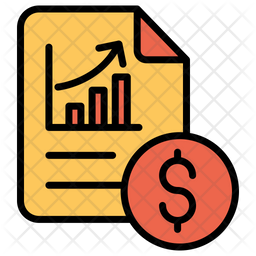
Global Cancer Registry Software Market 2020 (Includes Business Impact of COVID-19)
- TBI678604
- April 29, 2020
- Global
- 149 pages
- Market.US
“Global Cancer Registry Software Market”, which is a report produced by Trusted Business Insights, provides in-depth knowledge into the global cancer registry software market in a confident manner. Presentation of both historical and projected revenues provide an in-depth understanding of the potentials in the global market currently as well as during the next 10 years. In addition, opportunities, restraints, trends, threats, and drivers are explained in detail in the report. The report provides detailed and insightful information and data about the key players in the global market and has been segmented based on software, deployment model, component, end-use, and region.
Request Covid - 19 Impact
Overview
Cancer registry is a designed information system for collecting, managing, and analyzing data on persons diagnosed with malignant or neoplastic disease (cancer). It is a publicly available free software programs for serving the purpose of collecting and processing cancer patients related data. Cancer registry software provides in-depth information on state and nationwide cancer statistics. In order to maintain registries that provide high-quality data, the Centers for Disease Control and Prevention's (CDC) National Program of Cancer Registries (NPCR) provides support for nations and states. There are registrars to maintain and keep registry up-to-date. Most of these cancer registrars work in hospitals. Other work settings and centers for registrars include standard-setting organizations, central or state cancer registries, government agencies, pharmaceutical companies, software vendors, staffing firms, and insurance agencies. Also, there are many self-employed cancer registrars. The National Cancer Registrars Association (NCRA), a not-for-profit association, include registry professionals and Certified Tumor Registrars (CTR). NCRA is primarily focused on education and certification. Globally, there are more than 5,800 NCRA members and 4,500 CTRs. There are many companies worldwide designing and developing cancer registry software for these registrars. Cancer registry software produced by companies include modules for data entry, consistency check, quality control, and basic analysis of data.
Dynamics
The major factors driving growth of the global cancer registry software market are growing incidence of cancer and an increasing number of care organizations. According to WHO, cancer took away lives of around 9.6 million people globally and around 17 million new cases are registered every year. Cancer registry software is very helpful in automating data collection for both state and national registries, which further assists in tracking effectiveness of various treatment approaches. In addition, collection of data by state registries is very helpful in understanding and addressing cancer in a better way. The data collected by registries are very important to target risk factors such as sun exposure, tobacco use, and environmental factors, which include chemical & radiation exposure. This data is also very important to identify areas where screening and treatment should be tracked for further improvement. In addition, data collected by registry is useful for institutes doing research to estimate efficiency of treatment, cancer control, and prevention program. Demand for cancer registry software is expected to increase in the global cancer registry software over the forecast period owing to various advantages such as ease of use, efficient workflow management, automated case registries, effective follow up, and e-updates. Cancer registry software widens the scope for epidemiological research as it connects with patients in remote areas. The recent improvements from old versions of software are also expected to further drive demand for cancer registry software market in the global cancer registry software market over the forecast period.
Global Cancer Registry Software Market Segment Analysis:
By Software: Among the software segments, the standalone segment accounts for the major part of the revenue share, and this is expected to continue over the forecast period owing to its easy-to-use tools and other advanced features. In addition, growth of the segment is attributed to its feature of allowing processing of registry data and multiple system usage.
By Deployment Mode: The on premise segment among the deployment mode segments accounts for highest revenue share in the global market and is expected to maintain its dominance over the forecast period. This growth is attributed to lower risk of external attacks and assured high data security against breach, which are boosting revenue further.
Global Cancer Registry Software Market Regional Analysis:
The market in North America is projected to maintain its dominance in terms of revenue share. Growth of the market in the region is attributed to presence of advanced infrastructure in the region. In addition, growing incidence of cancer in the region as a result of increasing tobacco use and lack of physical exercise is increasing market growth.
Global Cancer Registry Software Market Segmentation:
By Software:
Standalone
Integrated
By Deployment Model:
On premise
Cloud-based
By Component:
Commercial
Public
By End-Use:
Government & third party
Private payers
Hospital & medical practice
Pharma biotech & medical device companies
Research institutes
Table of Contents Chapter 1. Methodology and Scope 1.1. Research Methodology 1.2. Research Scope & Assumptions 1.3. List of Data SourcesChapter 2. Executive SummaryChapter 3. Global Cancer Registry Software Market Outlook 3.1. Market Segmentation 3.2. Market Size and Growth Prospects, 2016 - 2027 3.3. Value Chain Analysis 3.4. Market Dynamics 3.4.1. Market driver analysis 3.4.2. Market restraint analysis | read more...



















